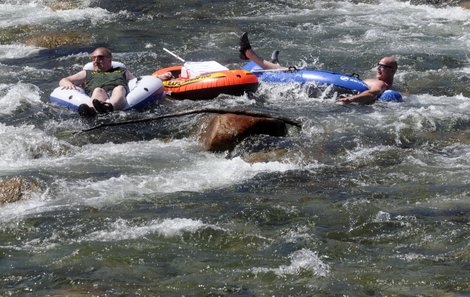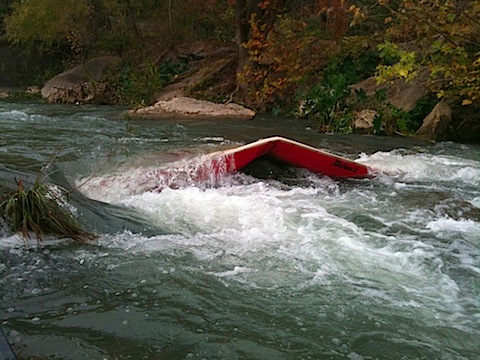
(spokesman.com)
Montana Fish, Wildlife & Parks urges floaters to use caution and watch for river hazards, such as diversion dams, boulders, and log jams. Recently in western Montana, one drowning and several rescues occurred at a Bitterroot River diversion dam, located approximately three miles downstream of the Woodside Crossing Fishing Access Site (FAS). Other accidents and near drownings have occurred on other Montana rivers in recent weeks.
FWP Region 2 Fisheries Manager, Pat Saffel, says that rivers are dynamic and water levels can change frequently. Changes in water flows mean that risks posed by these obstacles—like diversion dams, log jams and rocks—also change. “Be on the lookout for these obstacles, take it slowly, and when in doubt, stop and scout the water conditions. If you need to, walk yourself and your boat around obstacles,” Saffel says.
In the case of the Bitterroot diversion dam between Woodside Bridge and Tucker Crossing FAS, FWP tells those that float this stretch of river to walk boats (portage) around the dam. FWP urges boaters to familiarize themselves with the dam’s location before their trip and to watch for warning signs at upstream access sites and along the river that warn of the dam and point to the portage location.
Saffel says that FWP is interested in looking at long-term solutions for boater passage at the site, but for now boaters need to carry their boats around.
“If you’re not comfortable carrying your boat around this particular diversion dam, we urge you avoid this stretch of river,” says Saffel. “There is a good spot to portage around the dam, and we want all river users to be aware and to use it.”

(damnyak.ca)
Small low-head dams, like this one and others on the Bitterroot and elsewhere, are built to back up water, often for irrigation purposes. Because of their small size, they often do not appear to be dangerous, especially when viewed from a boat or canoe upstream, but water pouring over the dam creates a churning backwash or current. This “hydraulic,” as it is often called, is really a recirculating current.
The rolling water can take any object (including a person) to the bottom of the stream, release it to the surface, suck it back to the face of the dam, and push it back to the bottom. This cycle can continue indefinitely. [Watch simulation of diversion dam hydraulics]. Branches and other debris trapped in the hydraulic pose an additional hazard to the victim. It is hard to stay afloat, even if wearing a life jacket (PFD).
“As you go to the water to cool off on this Fourth of July weekend and over the next few weeks, we want you to have fun out there but to have water dangers and safety precautions on the front of your mind,” Saffel says.
For more on staying safe in the outdoors, go to the FWP website at fwp.mt.gov on the Recreation page, click on Stay Safe Outdoors.
(Report by Montana Fish, Wildlife and Parks; Cover photo: John Gussman-nps.gov)